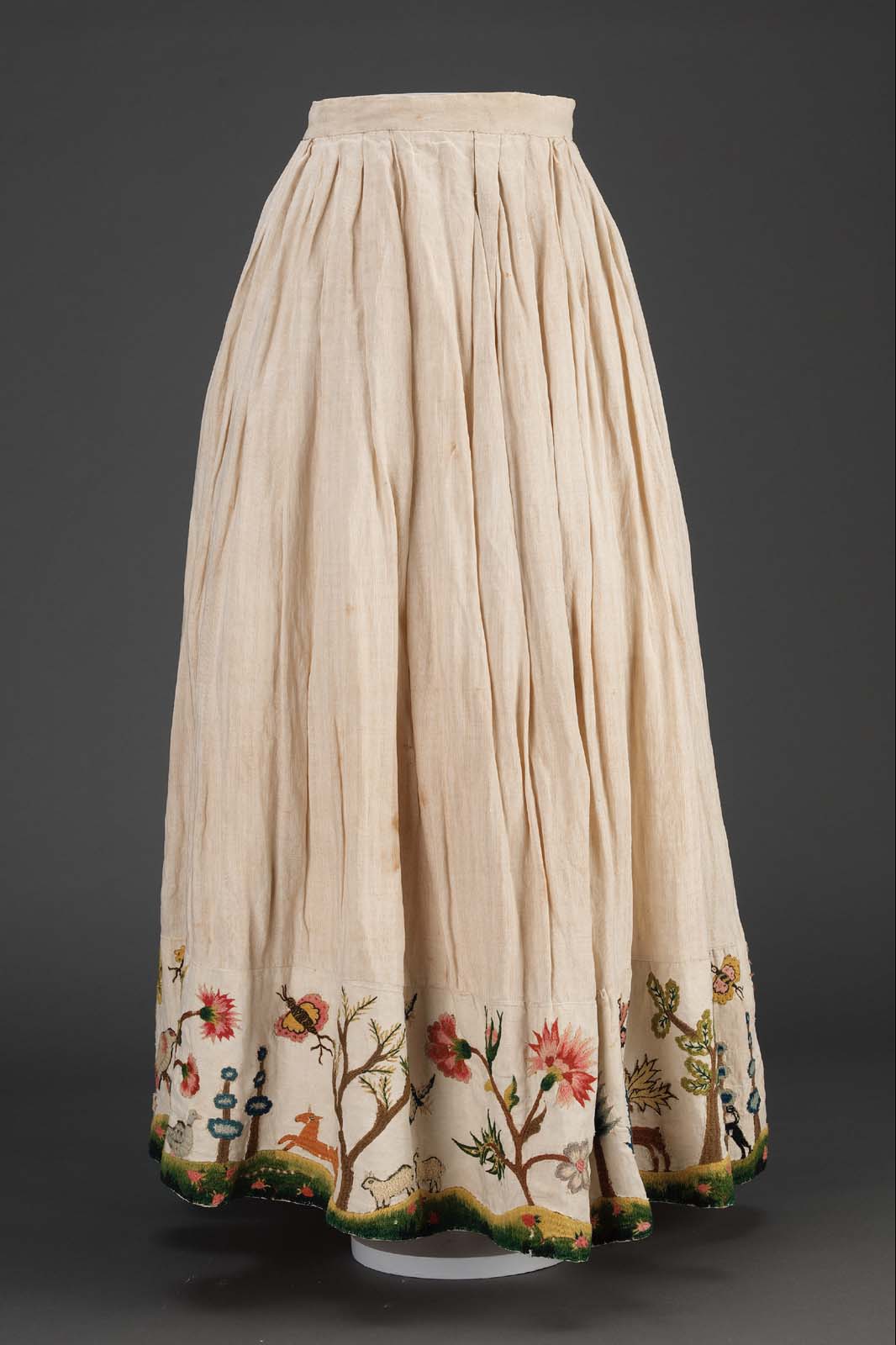During the Revolutionary War, fashion often was adapted to the times. Many women boycotted cloth made in England, but calico which was banned in England was a mainstay of Colonial life. Women who lived near larger cities had more available to them then women who lived further west. Wherever they lived, the well dressed colonial woman had certain staples in her wardrobe.
 The Basics: Colonial women dressed in layers. In the South, they wore less layers than in the North, but they still would not be seen in public without these basic layers. The first thing a woman would put on is a shift, a natural colored short loose linen gown. Next a colonial woman would wear a stay on the upper part of her body to help her posture. Next would come a hoop petticoat. Sometimes a woman would also wear an outer petticoat. Her gown would open in the middle to show her outer petticoat. In cold weather, she would wore more than two petticoats for extra warmth.
The Basics: Colonial women dressed in layers. In the South, they wore less layers than in the North, but they still would not be seen in public without these basic layers. The first thing a woman would put on is a shift, a natural colored short loose linen gown. Next a colonial woman would wear a stay on the upper part of her body to help her posture. Next would come a hoop petticoat. Sometimes a woman would also wear an outer petticoat. Her gown would open in the middle to show her outer petticoat. In cold weather, she would wore more than two petticoats for extra warmth.Dresses: A colonial women would wear a gown which was a bodice and skirt open in the middle to reveal a petticoat. A vest like garment called a stomacher would add a touch of color to the outfit. Kerchiefs of white or black silk or lace would be worn above the stomacher for modesty. Pieces of fabric were sewn on ether side of the dress called compreres and were sometimes laced with cords. Every gown except formal dresses were covered with aprons to protect the fabric and keep it from getting soiled. The aprons were even worn to church when women wore their Sunday best. Fabrics were usually simple cotton with checks, stripes and floral patterns, but ballgowns were made of silk or brocade.
Accessories: Every colonial woman wore a cap over her hair to keep it clean since she rarely washed it. For formal wear, women's hairstyles were elaborate coiffures or wigs, sometimes powdered. Hats were sometimes worn on top of their caps or wigs, but were not worn often due to war shortages. Shoes were leather with metal buckles or laces and were either flat or had high clunky heels. For jewelry, even poor women would wear miniature cameos on silk necklaces or bands.
Tamera Lynn Kraft
has always loved adventures and writes Christian historical fiction set in
America because there are so many adventures in American history. She has
received 2nd place in the NOCW contest, 3rd place TARA
writer’s contest, and was a finalist in the Frasier Writing Contest. Her
novellas Resurrection of Hope and A Christmas Promise are
available on Amazon and at Barnes and Noble.




































